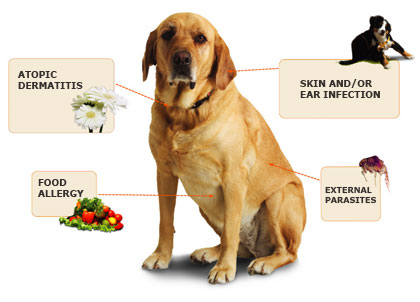
It seems that food allergies are more prevalent today than ever. It’s commonplace for food labels to warn that their products may have come in contact with nuts and for preschools to ban nuts of any kind. Indeed food allergies are on the rise in the U.S., and the top offenders are peanuts, cow’s milk, eggs, shellfish, tree nuts, soy, sesame and wheat. in addition, if you fall into three key demographics, your allergy risk rises considerably. Specifically, the odds of having a blood sample that suggests a food allergy was 4.4 times higher among young, non-Hispanic black males aged 1 to 19, compared to the general population.
The U.S. National Health and Nutrition Examination Survey, an ongoing national survey of the health of Americans conducted since the 1960s, recently reported the results of blood sample analyses on a very large representative sample of Americans across all age groups from 1 year to more than 60 years old–the first such comprehensive national study. over 8,200 people were measured for food-specific immunoglobulin E (IgE) levels to four of the biggest culprits: peanuts, cow’s milk, egg, and shrimp. Immunoglobulin E is an antibody found in the blood, and high IgE levels are suggestive of an increased risk of food allergies. (Though as we’ve reported previously, elevated IgE levels are not a reliable diagnostic criterion for food allergies on their own.) other survey questions asked about non-food allergies including asthma and hay fever.
Judging the elevated IgE levels in blood samples taken, the researchers estimated that 2.5 percent of Americans have food allergies to one of the four foods tested, though the rate was higher in children ages 1 to 5 (4.2 percent) and lower in adults over age 60 (1.3 percent). This trend may be partly due to a loss of sensitization with age and allergies resolving over time. for example, separate studies have suggested that peanut allergies were prevalent in 1.8 percent of children 1 to 5 years, and 2.7% in children 6 to 19 years, but decreased to 0.3 percent among adults.
Interestingly, food allergy risk was higher among those with a clinical diagnosis of asthma, and the presence of food allergy in this population appeared to be associated with worsened symptoms. those with asthma and food allergies were 6.9 times more likely to have experienced a serious bout of asthma is the past year than asthmatics without food allergies. Whether the relationship between food allergies and asthma is causal or not is not clear, yet consuming even a small amount of a problem food can induce asthma attacks in sensitized individuals.
The data pointing to increased risks among specific populations should help those in these risk groups be aware of their possible predisposition to food allergies. the need for further investigation into this growing public health concern is evident.